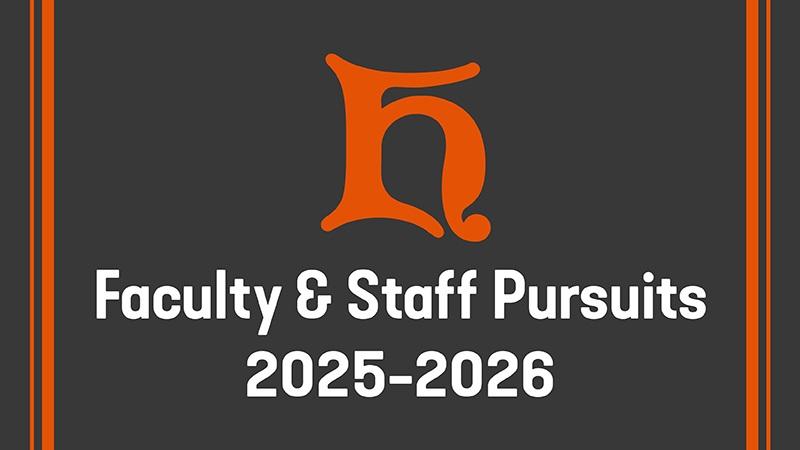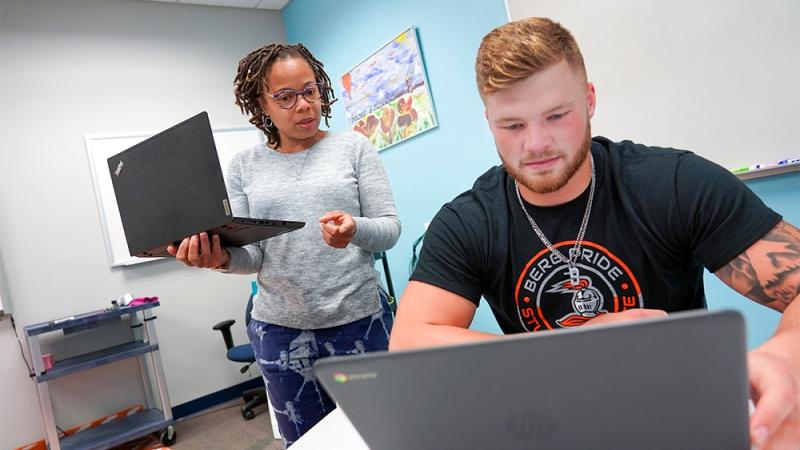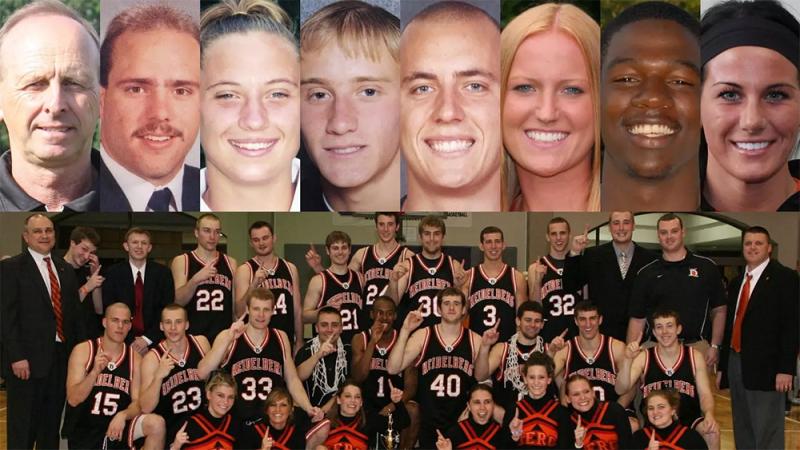Students gain confidence, advantages in Body Donor Lab
Heidelberg undergrads who have the rare opportunity for hands-on learning in the Dr. George Barlow Body Donor Lab go into the experience with all of the trepidations you might expect: “What do the donor bodies look like?” What does it smell like in the lab?” “What am I allowed to touch and not touch?” They describe those first-time experiences as “nerve-racking” and “unsettling.”
But those human responses are quickly put to rest because the students are well prepared academically and sensorially by their professor, Dr. Pam Faber. Pam has coordinated and managed the Body Donor Lab, including procuring the donor bodies through The Ohio State University, for the 26 years she’s been in the Department of Biology and Environmental Science.
Two upper-level students – senior Eli Allen and junior Brianna Lloyd – shared their perspectives about what it’s like to work in Heidelberg's unique Body Donor Lab. And though they’re still undergrads, they fully understand the advantages that working in the lab will provide them when they enter graduate programs in health professions.
The conclusion is a no-brainer: Studying anatomy on a real donor body brings benefits on multiple levels.
Preparation is key
Students have to prove they are ready and prepared before they get to work in the lab. Eli – a senior biology major who plans to become a general dentist – explains that students first have to successfully complete the Mammalian Dissection course with a high grade.
“This allows us to acquire the hand skills and knowledge for the actual dissection part of working in the lab and prove our dedication and trustworthiness to Dr. Faber,” he says.
But even before that course, students prepare by being exposed to models and textbooks of anatomy material. They also study the body structures of various animals such as cows, chickens, rabbits and rats. Some students get their feet wet as well working in the Longaker Animal Lab.
For junior biology/premed major Brianna Lloyd, whose career goal is to become a pediatrician, working in the lab was the first time she’d ever seen a deceased body. “So of course, I was nervous, but I was also excited to begin working on the cadavers,” she says. “The whole experience is eye-opening, but you get the amazing opportunity to study the human body in a way that most students do not get exposed to until graduate school.”
Finding that comfort level
With experience comes confidence, and for some, that’s one of the biggest obstacles. It can take some time. But after a few classes in the lab, traditional lectures and even research opportunities, the students feel fully comfortable and those nervous moments disappear.
Early on, the students spend time learning the importance of respecting the donor bodies, how they are maintained, and studying more anatomy. Eli, as a senior, has progressed to working on complex dissection.
“We first removed the skin and then split off to do various muscle groups,” he explains. “This eventually evolved into dissecting the vessels and organs in the body. At the very end, we were fortunate enough to choose an area to fully dissect, such as the brain, knee or heart.”
As an advanced student with a chosen career specialty in dentistry, he was able to specialize in head and neck dissections.
Advantageous experience
Exposure to donor bodies allows students to learn multiple areas of the body. But the overall experience itself provides ’Berg science students a tremendous advantage in grad school. Few undergrads attending small colleges have this opportunity.
“I believe that my work in the Body Donor Lab will benefit me immensely in my future career,” Eli says. “The knowledge and insight I have gained from working with the donor bodies will give me a boost in dental school, as I am already comfortable with in-depth human anatomy.”
He adds that the opportunity to work in the Body Donor Lab was a key in his decision to attend Heidelberg.
Brianna adds, “Many students don’t get the opportunity to see a cadaver, let alone work on them until grad school. This puts me ahead of many students and it is a huge booster on medical school applications.”
Expression of gratitude
As part of their preparation to work on the donor bodies, Pam instills in students a deep respect for the incredible gift of learning – and often sacrifice – that the donors and their families have given Heidelberg students. It doesn’t take long for the students to understand the selflessness of the body donors and the educational contributions they have made to their education and career preparation.
Annually in November, Pam’s BIO 403 Cadaver Prosection class plans and carries out an appreciation ceremony on campus. This year, Eli was one of the students chosen to represent his peers in expressing gratitude for the opportunities the Body Donor Lab provides ’Berg’s science students.
“My first experience in the lab left a significant impression on me,” he said at the ceremony last fall. “I was grateful for the generous people who laid on the table for us. These individuals made the decision to help out the next generation of students, which I appreciate immensely.
“As I dissected and learned, it really made me think about how each one of us is the same way on the inside.”
𑁦 𑁦 𑁦
We would like to thank all those who generously donated their bodies through the Body Donation Program at The Ohio State University. Without them, we would not be able to offer such a strong anatomical curriculum.




